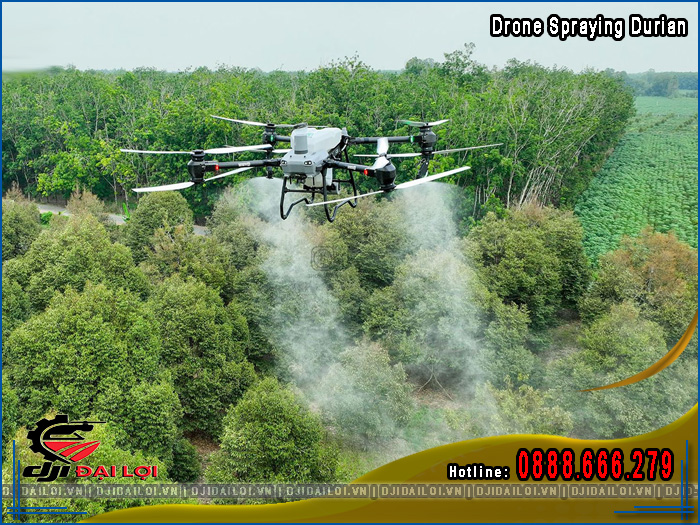On agricultural forums and grower communities, the question “Which drone is best for spraying durian?” is frequently raised - especially by those managing orchards larger than 1 hectare. This reflects a growing reality: manual spraying for durian trees is increasingly labor-intensive, hazardous, and inefficient. But with dozens of drone models on the market, which is the best choice in terms of features, durability, cost, and real effectiveness?

When evaluating which drone is best for durian spraying, general agricultural drone standards aren't sufficient. Durian trees have dense foliage, tall canopies, and require uniform chemical distribution across all leaf layers. The following key criteria determine real spraying performance:
Additionally, drones for durian spraying must adapt to hilly terrains (e.g., Central Highlands), so stability and balance control are mandatory.
Although all are classified as “spraying drones,” each model varies in design, power, and suitability for different durian farming scales. Below is a comparison of three top-rated drone models by real users:
|
Criteria |
DJI Agras T25 |
XAG V40 |
HY-BRAVO X20 |
|---|---|---|---|
|
Spray Pressure |
4.5 bar |
5.0 bar |
3.8 bar |
|
Tank Capacity |
20L |
16L |
25L |
|
Flight Time/Charge |
22 minutes |
25 minutes |
20 minutes |
|
AI & Obstacle Avoidance |
Yes |
Yes |
Limited |
|
Smart Navigation |
RTK + Waypoint Map |
RTK + AI Vision |
Basic GPS |
|
Auto Return When Battery Low |
Yes |
Yes |
No |
|
Warranty & After-sales |
12 months official |
18 months, service hub |
6 months via reseller |
|
Price (Reference) |
~155 million VND |
~180 million VND |
~120 million VND |
|
Suitability for Large Farms |
★★★★☆ |
★★★★★ |
★★★☆☆ |
The most popular choice among durian growers, thanks to its high stability, intuitive software, and powerful 4.5 bar spray mode for efficient canopy penetration. Smart mapping, obstacle avoidance, and auto-return help reduce operating errors.
For high budgets and maximum performance, the XAG V40 is ideal. It uses AI to recognize canopy structure and adjust spray rate accordingly, improving absorption efficiency by 20%. Best suited for farms over 5 hectares.
A budget-friendly option for small orchards or beginners. It features a large 25L tank but lacks auto-return and stable navigation. After-sales support is limited.
There is no “perfect drone” - only one that fits your needs. Here's a summary of the advantages, limitations, and risks from real-world users:
Not all orchards are the same - and no drone fits every need. Here’s a recommendation guide based on specific scenarios:
|
Use Case |
Recommended Drone |
Price Range |
Highlight |
|---|---|---|---|
|
Budget under 130 million VND |
HY-BRAVO X20 |
120–125 million |
Large tank, suitable for small orchards |
|
High precision, obstacle avoid |
DJI Agras T25 |
150–160 million |
Easy-to-use software, stable |
|
AI-enabled, top performance |
XAG V40 |
180–190 million |
Canopy recognition, smart dosage |
|
Mountainous terrain capable |
DJI Agras T50 |
~190 million |
Great stability, wind resistant |
|
Versatile (spray + seeding) |
DJI T30 |
~175 million |
Multi-crop usage |
Even with many options, the best durian spraying drone depends on canopy penetration, tank size, AI automation, and real-world durability.
Yes, especially for labor savings or hard-to-reach terrain. Choose compact models with 10–12L capacity.
Durian trees have dense canopies, over 6m tall. A pressure of ≥3.5 bar is needed to reach the underside of leaves.
Yes. Drones over 250g must be registered with the Defense Ministry. Some regions also require flight permits.
Early morning or late afternoon, when winds are low and humidity is stable to ensure better chemical adhesion.
Yes. Versatile models like DJI T30 or XAG V40 support multiple crops (e.g., mango, jackfruit, coffee, rice) via multi-map programming.